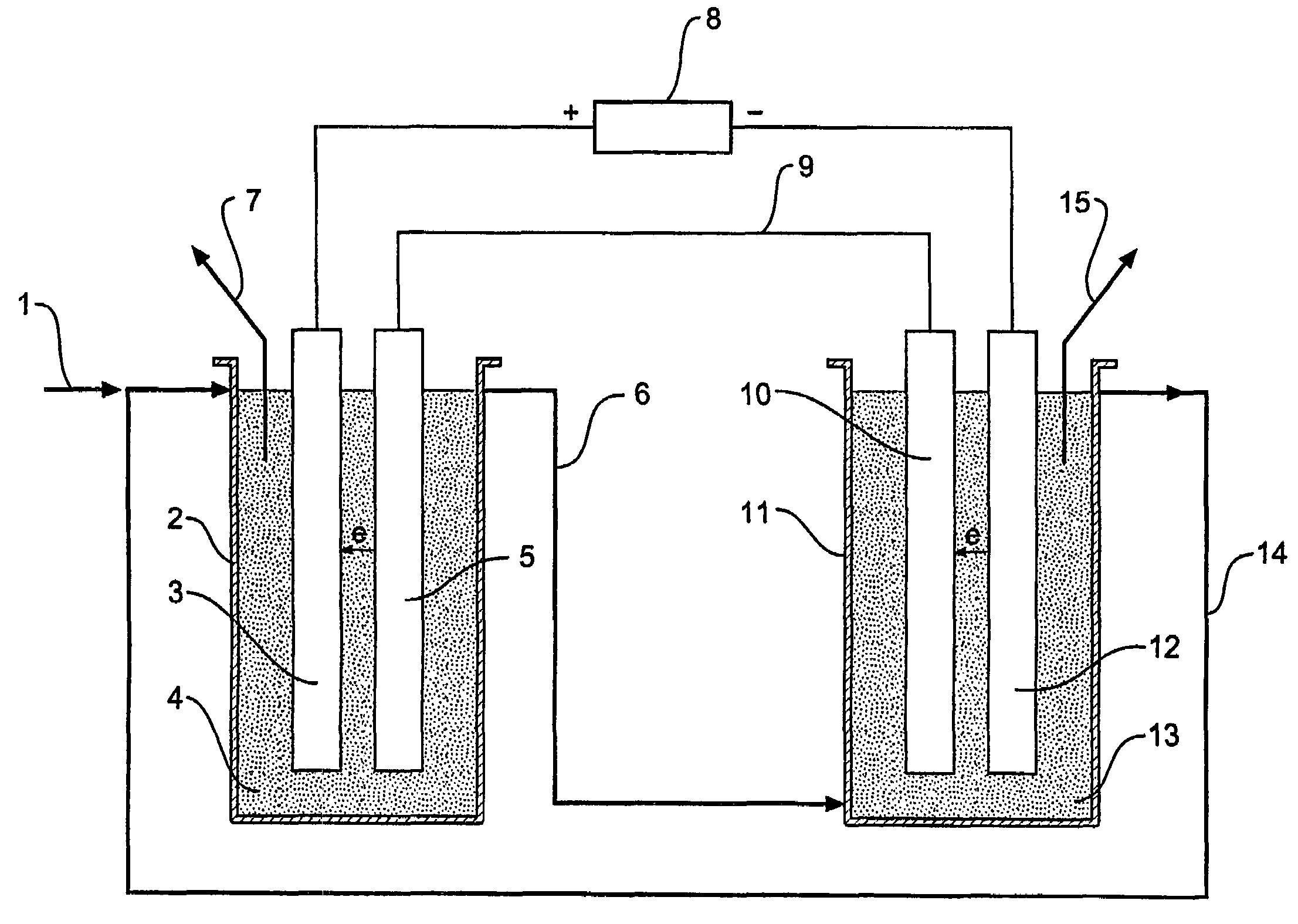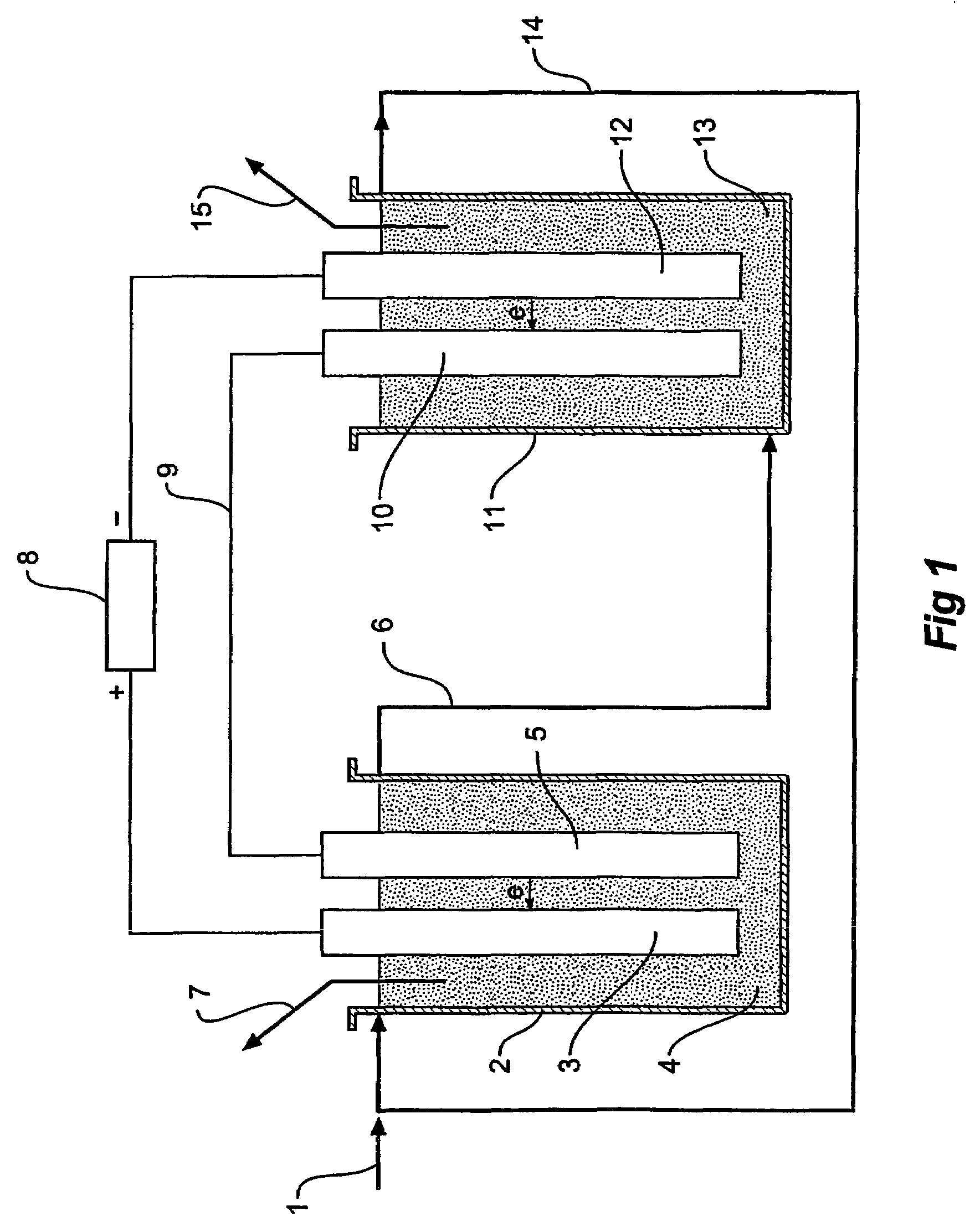Electrolytic commercial production of hydrogen from hydrocarbon compounds
a hydrocarbon compound and hydrogen technology, applied in the field of electrolytic commercial production of hydrogen from hydrocarbon compounds, can solve the problems of further development being likely curtailed and the diaphragm cell would have suffered further
- Summary
- Abstract
- Description
- Claims
- Application Information
AI Technical Summary
Benefits of technology
Problems solved by technology
Method used
Image
Examples
Embodiment Construction
[0024]In one form therefore the invention is said to reside in n electrolytic process that converts solid, liquid, or gas hydrocarbon compounds and water to carbon dioxide and hydrogen at high reaction rates using an electrolytic cell that operates without a diaphragm at high pressure and moderate temperature using catalysts in an electrolyte, wherein the electrolytic cell consists of the anode cell containing an anode electrode connected to a DC power source and an anode solution electrode connected by an external conductor to a cathode solution electrode and a cathode cell containing a cathode electrode connected to the DC power source and the cathode solution electrode and an electrolyte containing the hydrocarbon compounds is reacted with water in the anode cell to produce carbon dioxide and hydrogen ions and the electrolyte containing the hydrogen ions is transferred to the cathode cell and hydrogen ions are reacted in the cathode cell to produce hydrogen.
[0025]In an alternativ...
PUM
| Property | Measurement | Unit |
|---|---|---|
| temperature | aaaaa | aaaaa |
| pressure | aaaaa | aaaaa |
| voltage | aaaaa | aaaaa |
Abstract
Description
Claims
Application Information
 Login to View More
Login to View More - R&D
- Intellectual Property
- Life Sciences
- Materials
- Tech Scout
- Unparalleled Data Quality
- Higher Quality Content
- 60% Fewer Hallucinations
Browse by: Latest US Patents, China's latest patents, Technical Efficacy Thesaurus, Application Domain, Technology Topic, Popular Technical Reports.
© 2025 PatSnap. All rights reserved.Legal|Privacy policy|Modern Slavery Act Transparency Statement|Sitemap|About US| Contact US: help@patsnap.com



